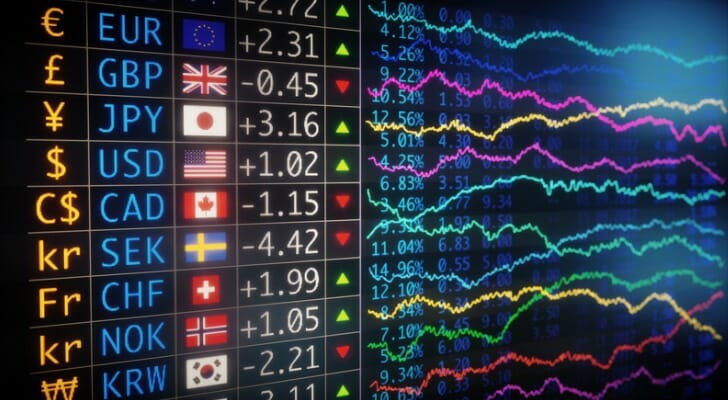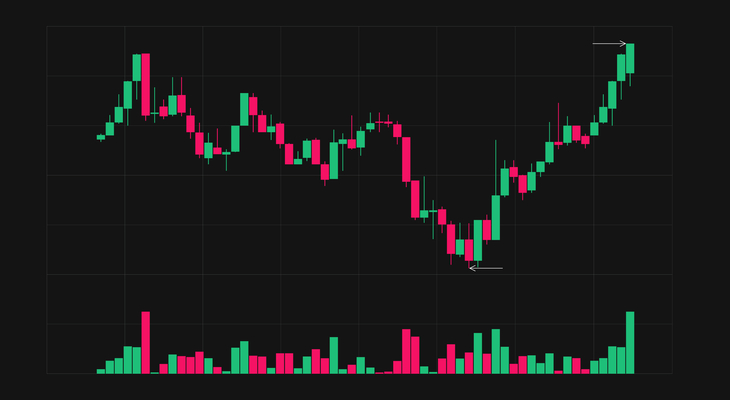Mastering Volatile Markets: Strategies for Success
Navigating volatile markets can feel like an overwhelming task, especially for novice traders. However, with the right strategies, success in these markets can be achieved.
Like a beacon of hope, mastering volatile markets is within reach for those willing to overcome the challenge. To assist traders in their journey, this article will provide detailed strategies, including risk management, trading tips, and an understanding of volatility.
With this knowledge, traders can learn how to identify and capitalize on opportunities while minimizing losses. Achieving success in volatile markets requires dedication and a willingness to take risks, but the rewards can be great for those who take the plunge.
Key Takeaways
- Volatility in markets can occur at any time and is driven by psychological forces such as fear and greed.
- Traders should manage risk, use stop loss orders, employ different order types, and stick to a trading plan when dealing with volatile markets.
- It is important to understand the risk on every trade and reduce leverage and position size during increased volatility.
- Emotional control is crucial in volatile markets to avoid making impulsive decisions based on emotions or market fluctuations.
Understanding Volatility
Volatility is a statistical measure which indicates the range of price fluctuations of an asset over a given period of time, and can be measured with tools such as the VIX index, Fear & Greed Index, Implied Volatility, and Realized Volatility.
Factors influencing market volatility include psychological forces, such as fear and greed, as well as supply and demand dynamics.
Techniques for measuring and analyzing volatility include Average True Range (ATR) and Bollinger Bands, which can help define realized volatility, as well as the VIX index and Fear & Greed Index, which measure expected volatility and investor sentiment, respectively.
Understanding and managing volatility is essential for success in volatile markets.
Managing Risk
Managing risk is essential for traders operating in volatile markets to ensure they are able to stay in control of their positions.
Risk management techniques include:nn1. Reduce leverage and position size during increased volatility.nn2. Use stop loss orders and limit orders to manage risk.nn3. Set take profit limit orders to eliminate emotional trading.nn4. Maintain a well-defined strategy and stay disciplined.
Volatility indicators such as the VIX Index, Fear & Greed Index, Average True Range (ATR), and Bollinger Bands can be used to measure market volatility and implied volatility.
This information can help traders make more informed decisions and adjust their risk management techniques accordingly.
When trading in volatile markets, it is important to remember that risk is inherent and to focus on maintaining emotional control and discipline.
Trading Tips
Successful trading in volatile markets requires a comprehensive understanding of trading tips and techniques.
Trading psychology is key to success, as it helps control emotional trading and enables traders to stick to their strategies.
Stop loss orders and limit orders can help manage risk, while take profit limit orders ensure traders exit trades at predetermined levels.
Different order types such as market orders, limit orders, and stop orders should be employed to help ensure entries and exits are in line with the market trend.
Traders should always consider market conditions before entering a position, and should reduce leverage and position size during increased volatility.
By remaining disciplined and following a trading plan, traders can increase their chances of success in volatile markets.
Frequently Asked Questions
What is the best way to manage risk in volatile markets?
Managing risk in volatile markets is essential for successful trading.
Leveraging options such as stop loss orders and limit orders can help traders limit their losses and enter trades in line with the market trend.
Hedging strategies can also be employed to protect against significant losses due to market downturns.
Diversifying investments with CFDs and gold can help to reduce the risk of large losses.
Additionally, traders should always have a well-defined strategy and keep their emotions in check when trading in volatile markets.
What is the difference between implied volatility and realized volatility?
Implied volatility is the current market pricing based on expectations for future movement. It is determined by looking at factors such as supply and demand, future market expectations, and news events.
Realized volatility, on the other hand, is the actual movement in prices over a historical period. It is calculated by looking at past price movements to determine the magnitude of price changes.
Both types of volatility can help traders understand the risk associated with a particular asset.
What is the VIX index and how does it measure expected volatility?
The VIX index, also known as the Volatility Index, measures the expected volatility of the S&P 500 over the next 30 days.
It is a financial derivative that uses short selling and options trading to determine the market’s expectation of the future volatility of the S&P 500.
The VIX index is calculated by the Chicago Board Options Exchange based on real-time trading prices of options on the S&P 500.
It is often used as a gauge of investor sentiment and risk appetite.
The VIX index is considered a key indicator of the stock market’s volatility as it reflects the market’s expectation of future volatility.
What are some strategies for successful trading in volatile markets?
Navigating volatile markets requires a nuanced approach that takes into account psychological and market forces. Strategies such as managing risk, employing stop losses, and using different order types can help traders mitigate their losses in these markets.
Buying strategies such as limit orders and take profit limit orders can help reduce emotional trading and ensure traders exit trades at predetermined levels. Additionally, traders should stick to a plan and be aware of market conditions to ensure success.
Last but not least, traders should remember to keep their emotions in check and diversify their portfolios to reduce risk.
How can CFDs be used to mitigate risk and hedge exposure?
CFDs (Contracts for Difference) can be used to mitigate risk and hedge exposure in volatile markets. Risk reversals and delta hedging strategies can be employed to manage market volatility. By taking positions in both directions, traders can neutralize their exposure to market fluctuations and reduce their overall risk.
CFDs provide leveraged trading allowing traders to open positions with higher margins. Gold is a classic safe-haven asset that can be used as a hedge to protect against market downturns. Diversification using CFDs can also help to reduce risk and volatility.
Conclusion
Despite the challenges, traders can find success in volatile markets with the right strategies. Risk management is essential, as is sticking to a trading plan and considering market conditions.
Utilizing limit and stop loss orders, take profit limit orders, CFDs, and gold, traders can reduce their exposure to risk and diversify their portfolio.
Technical analysis tools such as ATR and Bollinger Bands, as well as the VIX index and Fear & Greed Index, can provide insight into market volatility and investor sentiment.
With the right knowledge and strategies, traders can turn volatile markets into a lucrative opportunity.











